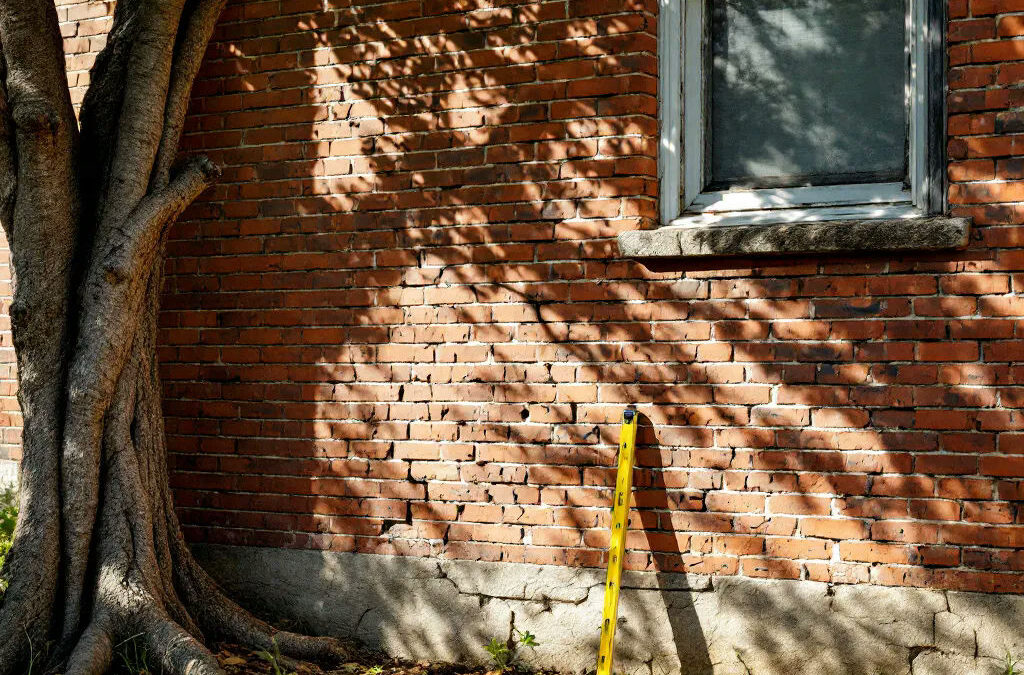I. Introduction
Maintaining brickwork is crucial not only for the aesthetic appeal of your home but also for its structural integrity. Foundation issues in brick homes can lead to costly repairs if not addressed early. This article aims to educate homeowners about the early signs of foundation problems and the suitable methods to rectify them.
II. Understanding Foundation Issues
A. Definition of Foundation Problems
Foundation problems refer to any issues affecting the stability and structure of a home’s foundation, often leading to a host of other construction-related problems. These issues vary in severity and can compromise the safety of the inhabitants, indicating the necessity for prompt attention and action.
B. Common Causes of Foundation Issues in Brick Homes
- Soil Movement: Soil shifting or settling can create significant challenges for a brick home’s foundation, leading to potential cracks and instability.
- Poor Drainage: Inadequate drainage systems can result in excessive water accumulation, eroding soil beneath the foundation and causing it to shift. For more information about construction drainage practices, read our guide on Pre-Pour Checklist for Large Commercial Concrete Jobs.
- Tree Roots: The invasive roots of trees can damage foundations by absorbing moisture and destabilizing the surrounding earth.
- Extreme Weather Conditions: Severe dry or wet spells can alter soil composition, leading to fluctuations in foundation stability. Learn how weather can affect construction projects in this post: How Weather Affects Commercial Concrete Pours.
III. Early Signs of Foundation Problems
A. Visible Cracks in Brickwork
Visible cracks in brickwork are one of the first signs of foundation issues that homeowners may notice. It’s essential to differentiate between horizontal and vertical cracks: while vertical cracks may often be less severe, horizontal cracks indicate more pressing stability concerns. These cracks can severely impact the structural integrity of your home, making early detection crucial.
B. Doors and Windows Sticking or Misaligned
Sticking doors and misaligned windows can often be attributed to settling foundations or movement within the home structure. If doors that once functioned well suddenly become difficult to open, or windows do not close properly, it could signal underlying foundation issues. Addressing these symptoms early can help prevent further damage.
C. Uneven or Sloping Floors
Uneven or sloping floors are key indicators of foundation problems. If you notice that your floors are no longer level or have developed an incline, this could be a sign that the foundation is shifting. Such physical changes should prompt immediate investigation to determine the cause.
D. Gaps Between Walls and Ceilings
Gaps forming between walls and ceilings indicate that structural changes are occurring, potentially due to foundation issues. These gaps can expand over time, leading to more prominent problems, such as water intrusion and pest infestations. Monitoring these spaces can help you catch foundation problems early.
E. Cracks in Mortar Joints
Cracks in mortar joints can also serve as a signal of foundation distress. When mortar cracks begin to appear, they can compromise the brickwork’s overall strength. It’s advisable to examine these cracks regularly, as they can provide insights into the health of both the brick and the home’s foundation. For related structural insight, check out The Importance of Reinforcement in Commercial Concrete Work.
IV. Assessing the Severity of the Problem
A. DIY Visual Inspection Tips
Conducting a DIY visual inspection can help homeowners identify potential foundation issues early on. Look out for cracks in brickwork, gaps in framing, or bulging walls. Regular inspections can catch small problems before they turn into major repairs.
B. Tools to Measure Cracks and Shifts
Utilizing tools like a level, ruler, or laser distance measurer can help quantify cracks and shifts in your foundation. Recording these measurements over time can help you determine if the problem is worsening, allowing for informed decisions on repairs.
C. When to Consult a Professional
While many issues can be assessed at home, knowing when to seek professional help is crucial. If visible signs of foundation problems persist or worsen despite your observations, contacting a structural engineer or foundation repair specialist can save you from extensive damage and costly repairs in the long run. Learn about commercial project evaluations here: What to Expect During a Commercial Concrete Installation Project.
V. Repair Options for Foundation Issues
A. Minor Repairs
- Filling Cracks: For minor cracking, injecting epoxy or filling gaps with mortar can improve the appearance and integrity of the brickwork.
- Replacing Damaged Bricks: If specific bricks show deterioration, replacing them may be necessary to maintain the home’s aesthetics and stability.
B. Major Repairs
- Foundation Underpinning: For significant foundation issues, underpinning may be required to provide stronger support. Avoid common repair errors by reviewing Top 7 Mistakes to Avoid in Commercial Concrete Construction.
- Drainage Installation: Installing or improving drainage systems can help redirect water away from the foundation, mitigating further erosion.
C. Addressing Soil Issues
- Soil Stabilization: Techniques such as compaction grouting or soil injection can help stabilize shifting soil around a foundation. Learn more about mix differences in How to Choose the Right Concrete Mix.
- Landscaping Adjustments: Modifying landscaping to redirect water flow can also prevent soil erosion, reducing foundation risks.
VI. Preventative Measures
A. Regular Maintenance Checks
Conducting regular maintenance checks can help catch potential foundation problems before they escalate. Schedule inspections at least once a year and inspect critical areas such as basements, crawl spaces, and exterior brickwork. For concrete job planning, see A Contractor’s Guide to Bidding on Commercial Concrete Jobs Profitably.
B. Improving Drainage Around the Home
Effective drainage systems are essential for keeping water away from the foundation. Strategies like installing gutters and downspouts that direct water away from the base of the home can minimize risk.
C. Managing Landscaping to Reduce Soil Movement
Strategic landscaping, including planting deep-rooted plants away from the foundation, can help stabilize the soil surrounding the home. Avoid heavy mulching against your home to prevent moisture accumulation. See the differences in foundation care here: Differences Between Residential and Commercial Concrete Applications.
D. Monitoring Tree Roots
Pay attention to trees planted near your foundation, as their roots can contribute significantly to soil movement. Regularly monitor the health of these trees and consider removing them if they pose a risk to your foundation integrity.
VII. Conclusion
Addressing foundation issues promptly is critical for maintaining the structural integrity of your brick home. By recognizing early signs and taking proactive measures, homeowners can protect their investment. Prioritizing brick home maintenance and solid foundation health ensures longevity and safety for you and your family.
Don’t wait for the problem to get worse—call us today at 916-562-2345 for a professional inspection and repair quote.


